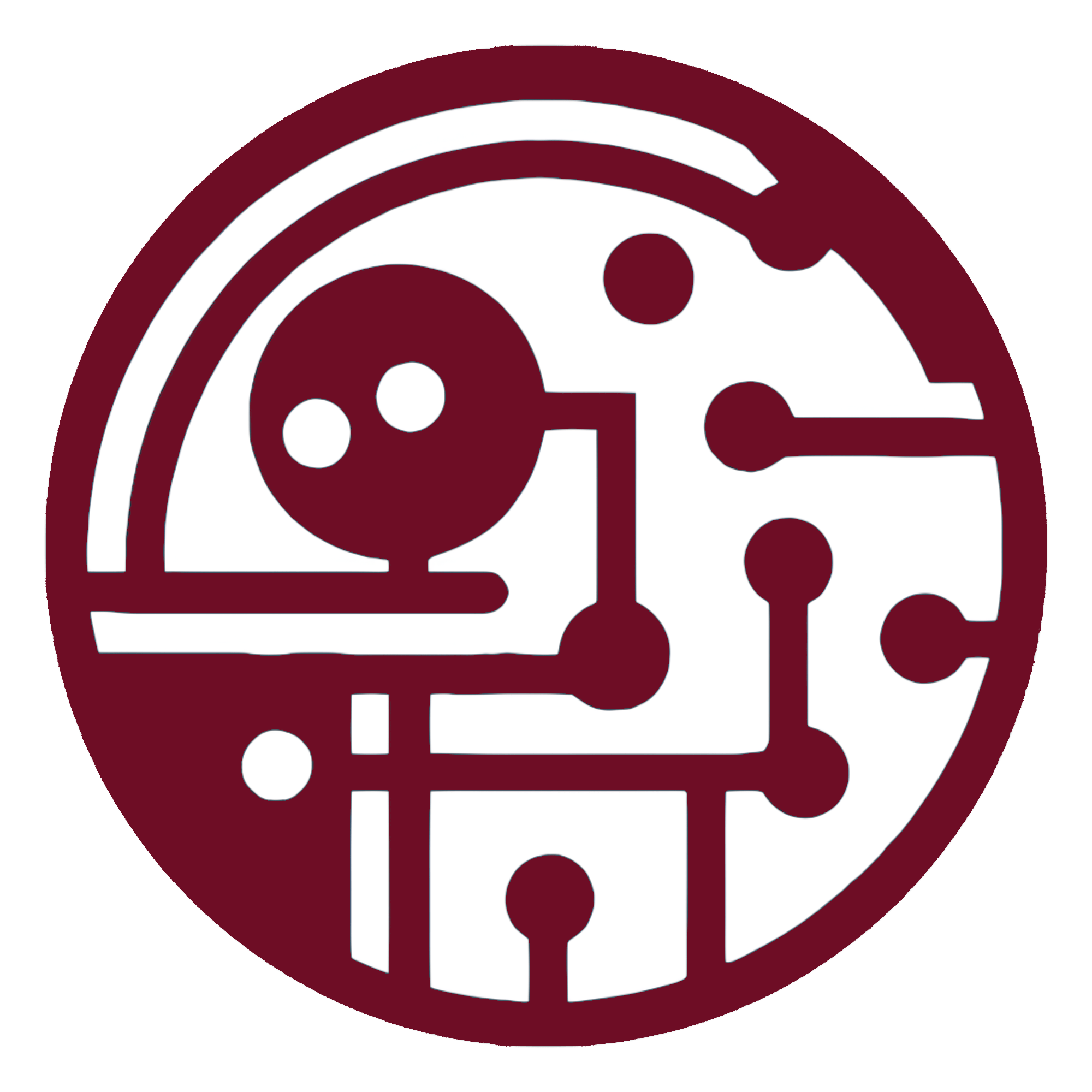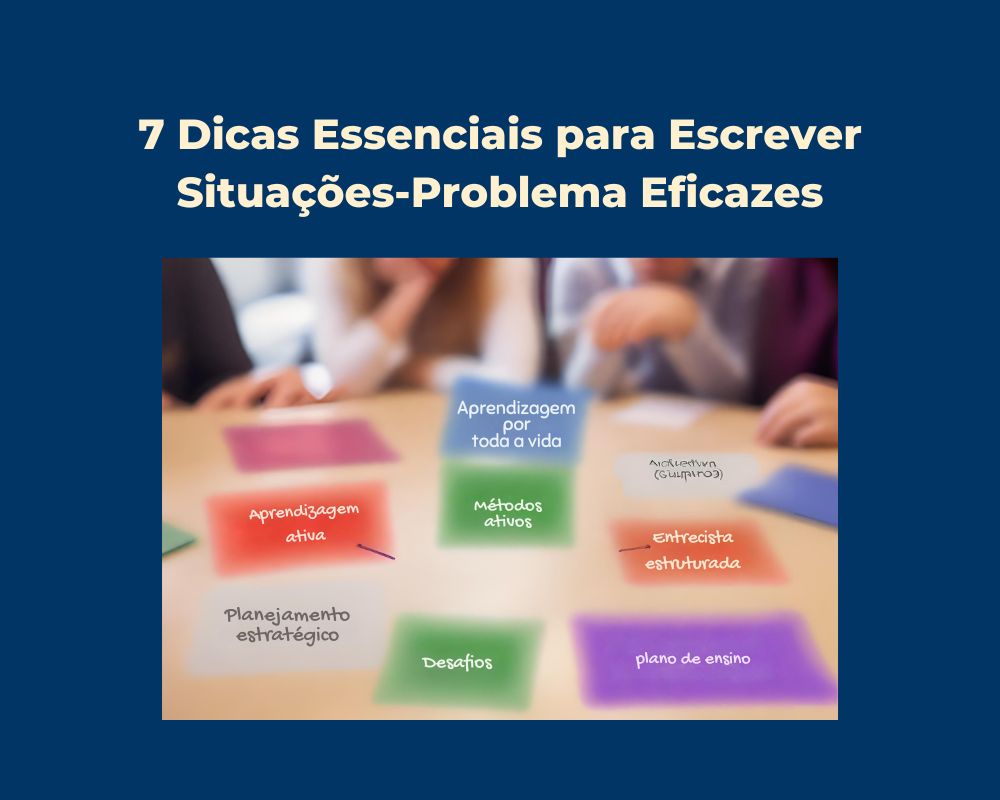7 Tips for Writing Problems
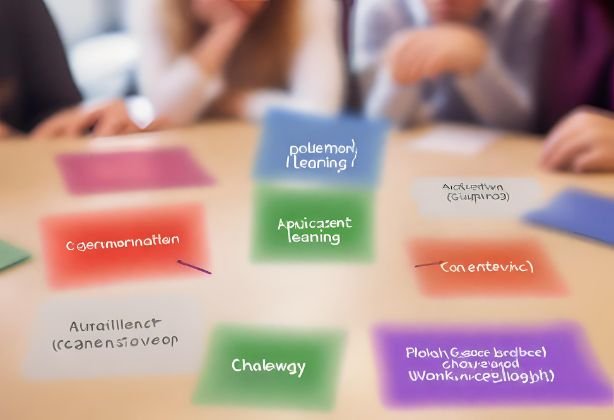
Problem-Based Learning (PBL) is a teaching methodology that places students at the center of the learning process, encouraging them to become active researchers and problem solvers. This approach requires educators to create challenging and relevant problem situations that not only engage students but also lead them to develop critical skills essential in medical practice. Here are 7 tips for writing effective problems for you to use in your PBL tutorials.
write like narratives!
A Problem-Based Learning (PBL) represents a turning point in the educational scenario, especially in medical training. This transformative method places students as protagonists of their learning journey, encouraging a deep immersion in scenarios that simulate real medical challenges. The key to the success of this approach lies in the construction of problem situations that not only capture students' attention, but also drive them to search for innovative solutions and develop ideas. critical skills essential for medical practice.
This methodology demands from educators a refined and creative look to develop these learning challenges. Problem situations must be engaging, realistic and sufficiently complex to stimulate critical thinking, collaboration and autonomy of future health professionals. Therefore, we offer here seven valuable tips to guide educators in the art of creating problem situations that make a difference in training engaged students prepared to face the challenges of the medical world.
By integrating these tips into pedagogical practice, educators will not only be able to improve the quality of medical teaching, but also contribute to the training of more qualified and humanized professionals. Below, we will explore each of these tips, highlighting their importance and how they can be effectively applied in creating challenging and relevant problem situations for the community. contemporary medical practice.
Stay with us for an immersion in the best practices for developing problem situations in Problem-Based Learning, an enriching journey that promises to transform the way future doctors learn, think and act when faced with the challenges of the profession.
Now that we understand the importance of placing students at the center of the learning process and the basis for creating effective problem situations, let's dive into the practical tips for its preparation.
What are Problem Situations in PBL?
Problem situations in the context of Problem-Based Learning (PBL) are carefully crafted scenarios that imitate real challenges from professional practice, designed to engage students in an active learning process. These scenarios act as catalysts for critical thinking, research and application of knowledge, promoting learners' autonomy in the search for solutions. By facing these problem situations, students develop essential skills such as critical analysis, decision-making, teamwork, and effective communication, preparing them not only to answer specific questions, but to competently navigate the complexities of professional and medical practice.

Problem situations in Problem-Based Learning (PBL) they are more than simple academic exercises; they are deeply immersive learning experiences that simulate the challenges encountered in medical practice. These are carefully crafted scenarios which serve as bridges between theoretical knowledge and practical application, encouraging students to become active researchers in the search for solutions. Through this dynamic process, future healthcare professionals are equipped with an arsenal of essential skills, including critical analysis, effective decision making, teamwork skills, and efficient communication, critical to success in a complex, interdisciplinary clinical environment.
When addressing the problem situations, students are challenged to think beyond superficial solutions, delving deeply into the layers of complexity that each scenario presents. This methodology not only promotes a richer understanding of medical concepts, but also develops crucial skills such as autonomy, critical thinking and the ability to apply knowledge in varied contexts. This holistic approach to medical education prepares students to face the uncertainties and ethical challenges inherent in medical practice, equipping them to confidently navigate the complexities of professional life and medical practice.
Essentially, problem situations in PBL are not just teaching tools, but rather an invitation to a journey of discovery and personal and professional growth. They encourage the curiosity, The investigation and the innovation, preparing medical students to become professionals capable of contributing significantly to the evolution of health and well-being. As we move forward, we will explore practical tips for creating problem situations that maximize learning potential in this transformative pedagogical approach.
1. Contextualize the Problem in Professional Reality
Authenticity is key. Problem situations must be rooted in real medical practice scenarios. This means creating problems that reflect situations that students may encounter in their future professional practice. This way, they can see the relevance of what they are learning and how to apply it in the real world.
The key to a Problem-Based Learning Effective (PBL) lies in the authenticity of the scenarios proposed to students. When creating problem situations, it is essential that they are deeply rooted in professional reality of medical practice. This not only increases student engagement, but also ensures that learning is directly applicable in their future work environments.
Problems that simulate real situations faced by doctors and healthcare professionals encourage students to see beyond the theoretical content. They begin to understand the importance of each lesson and how this knowledge is used in diagnosing, treating and caring for patients. This approach contextualized promotes meaningful learning and prepares students for the challenges they will encounter in their career.
Therefore, when developing problem situations, it is essential to incorporate cases that reflect current and relevant challenges in medicine. This may include complex diagnostic scenarios, ethical dilemmas, managing healthcare in resource-limited situations, among others. This practice not only helps students understand the practical applicability of their studies, but also develops a critical thinking and problem-solving skills adaptive to the realities of medical practice.
In short, by aligning problem situations with professional reality, we are not just teaching medicine; We are training doctors ready to face the complexities of patient care with competence, empathy and innovation. This is the essence of PBL – preparing students to be not just good academics, but excellent professionals in the healthcare field.
Next, we will explore other critical dimensions for the elaboration of effective problem situations in Problem-Based Learning, expanding students' vision beyond diagnosis and treatment, encompassing the entirety of medical practice.
2. Include Ethical, Psychological and Social Aspects
Medical practice is not limited to diagnoses and treatments; involves complex ethical, psychological and social aspects. Incorporating these elements into problem situations enriches the debate, stimulates critical thinking and prepares students for the nuances of medical practice, where the answers are not always black and white.
Medical practice is a complex mosaic that goes beyond the diagnosis-treatment binomial, encompassing a wide range of ethical, psychological and social aspects. By integrating these dimensions into Problem-Based Learning (PBL) problem situations, we provide a rich educational experience that prepares students for the multifaceted reality of medicine.
Including ethical dilemmas, for example, challenges students to consider moral decisions complex, stimulating the development of refined critical thinking. These scenarios prepare them for everyday situations in medicine, where choices can profoundly affect patients' lives.
Furthermore, addressing the psychological aspects allows students to recognize the importance of patients' emotional well-being and the impact that health conditions can have on quality of life. This encourages a more humanized care, essential for the training of empathetic doctors who are attentive to the individual needs of each patient.
Furthermore, consider the social factors — such as social determinants of health — expands students’ understanding of how inequality, culture, and socioeconomic context influence health and access to care. This enables them to think about solutions that consider equity and justice in the healthcare system.
Finally, by enriching problem situations with these elements, we are not only training technically competent professionals, but also doctors who understand the complexity of human beings and society. These future doctors will be better prepared to face the real challenges of medical practice, where Answers are not always black and white.
In the next segment, we will explore other crucial strategies for creating engaging and educationally valuable problem situations in Problem-Based Learning, further expanding students' ability to adapt and thrive in a dynamic medical environment.
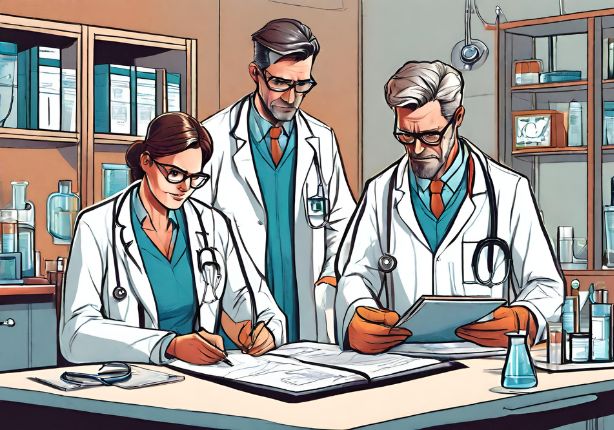
3. Foster Teamwork
Medicine is a collaborative practice. When writing problem situations, think of ways to encourage collaboration among students. This can be done through problems that require different points of view or specialties to be resolved, promoting interdisciplinarity and the importance of teamwork, including interprofessional teams.
In medical practice, the team work It's not just an option, it's a necessity. Professionals from different specialties collaborate to offer the best possible care to patients. Reflecting this reality, problem situations in Problem-Based Learning (PBL) should be designed to encourage interdisciplinary collaboration among students. This not only mirrors real medical practice, but also reinforces the importance of learning to work effectively as a team.
When incorporating scenarios that require varied perspectives and knowledge of different areas of medicine, educators can encourage students to share knowledge, debate ideas and reach joint solutions. This process enriches the learning experience, as each student brings their unique vision to the group, promoting a rich and multifaceted learning environment.
Furthermore, encouraging teamwork prepares students for interprofessional teams that you will encounter in your career, where doctors, nurses, pharmacists and other healthcare professionals work together for the well-being of the patient. The ability to collaborate effectively with professionals from different areas is essential for a successful medical practice and promoting the health of patients.
Therefore, when planning problem situations for PBL, it is crucial to include elements that require and value teamwork. This not only prepares students for the realities of the healthcare environment, but also promotes the development of skills such as communication, leadership, and conflict resolution, essential components of effective collaboration.
In short, by fostering teamwork through problem situations, we are equipping medical students with the skills needed to navigate the complex network of professionals that make up the healthcare system. Thus, we contribute to the training of doctors capable of acting as valuable members of interdisciplinary teams, improving the quality and effectiveness of patient care.
Continuing, we will delve into other vital strategies for developing problem situations in Problem-Based Learning, each one contributing to preparing future doctors for a dynamic and collaborative career in the healthcare field.
4. Promote Learner Autonomy
Encourage students to take initiative in their learning. Problem situations must be challenging enough that they have to actively seek out new information, critically analyze data, and apply previous knowledge in new and innovative ways, according to each class's maturity level in the course curriculum.
Promote the learner autonomy is fundamental in the context of Problem-Based Learning (PBL), encouraging students to become active protagonists of their own educational journey. To achieve this, it is essential that problem situations are meticulously designed to challenge students, encouraging them to seek new information, accomplish critical reviews data and apply prior knowledge in creative and innovative ways. This process not only fosters the development of research and problem-solving skills, but also encourages curiosity and active engagement with the study material.
Autonomy in learning prepares students for the reality of medical practice, where professionals are often faced with unexpected and complex situations that require a quick ability to decision making and adaptation. By facing real challenges in a safe learning environment, students develop not only technical knowledge, but also trust on your own abilities to navigate varied clinical scenarios.
Furthermore, adjust the complexity of problem situations according to the maturity level of the class in the course curriculum is crucial. This ensures that all students, regardless of their stage of learning, can benefit from the experience, challenged appropriately and productively, without feeling overwhelmed.
By encouraging the initiative of students in their learning, educators are not only imparting knowledge but also cultivating clinicians capable of independent thinking and continuous lifelong learning. This is the true essence of quality medical education - preparing future professionals to be innovative, reflective and autonomous in solving health problems.
In this context, learner autonomy in PBL not only translates into academic benefits, but also into a profound impact on the personal and professional development of medical students, equipping them with the necessary skills for a successful and rewarding medical career.
Later, we will explore other important dimensions of creating problem situations, continuing to deepen our understanding of how Problem-Based Learning can revolutionize the teaching and practice of medicine.
5. Balance Complexity
A good problem should be neither too simple, so that it can be solved immediately, nor so complex that it discourages students. The secret is finding the right balance that challenges students without overwhelming them, promoting a productive learning environment.
Find the right balance in complexity of problem situations is crucial to maximizing learning potential in Problem-Based Learning (PBL). Problems that are too simple may fail to stimulate critical thinking, while those that are too complex can overwhelm and demotivate students. The aim is to challenge students in a constructive way, encouraging them to apply previous knowledge and new information in a creative and reflective way.
This balance in complexity promotes a productive learning environment, where students feel challenged but not discouraged. They are encouraged to explore innovative solutions and develop essential skills such as critical analysis, problem solving and teamwork that are fundamental to their future medical practice.
Additionally, adjust the complexity to match the level of development of students within the curriculum ensures that everyone, from beginners to the most advanced, can fully engage in the PBL process. This contributes to an inclusive and comprehensive learning experience that respects individual learning pace and needs.
Therefore, when designing problem situations, it is essential to carefully consider complexity, aiming for an optimal point that fosters intellectual curiosity and academic growth. This not only enriches the educational experience, but also prepares medical students to deal with the uncertainties and challenges of clinical practice with confidence and competence.
In this context, the ability to balance complexity becomes a powerful pedagogical tool, capable of transforming the learning process into a journey of continuous discovery and active engagement with medical knowledge.
As we move forward, we will explore other strategies essential for crafting effective problem situations, further strengthening students' ability to adapt and thrive in the dynamic field of medicine.

6. Include Varied Data
To capture the complexity of medical practice and encourage deep learning, it is essential enrich problem situations with a variety of data. The inclusion of graphs, images, case studies and scientific data not only makes the proposed challenge more interesting and engaging, but also prepares students for the multifaceted reality of medicine, where the ability to interpret and use different types of information is crucial.
This multidimensional approach promotes a more comprehensive understanding of the topics covered, allowing students to develop valuable skills such as critical data analysis and evidence-based decision making. Furthermore, becoming familiar with various types of data from an early age prepares future doctors to deal with the vast amount of information they will face in their daily practice.
By incorporating different data formats into problem situations, educators also encourage curiosity and the engagement of students, challenging them to explore beyond conventional teaching material. This encourages an active approach to learning, where students become knowledge hunters, actively searching for information that will help them solve the problem at hand.
Therefore, the diversification of data in PBL scenarios not only enriches the learning experience, but also mirrors the complexity and interdisciplinarity of medicine, preparing students more effectively for the challenges of contemporary medical practice.
As we move to the next section, we will continue exploring strategies to enhance the impact of Problem-Based Learning, always aiming for the comprehensive and qualified training of future health professionals.
7. Continuous Feedback
Last but not least, the PBL process must include opportunities for ongoing feedback. This does not only apply to the solution of the problem, but to the thought process used by students. Feedback is crucial for developing reflective and critical skills.
The success of Problem-Based Learning (PBL) lies not only in the quality of the problem situations, but also in the integration of continuous feedback throughout the process. This feedback is not limited to evaluating the solution proposed by students, but extends to the way they approach the problem, encouraging reflection on their own thought process and the learning strategies adopted.
Continuous feedback acts like a mirror, reflecting areas of strength and opportunities for improvement for each student, playing a vital role in developing reflective and critical skills. Through this, students are able to self-assess their performance, identify gaps in their knowledge and proactively adjust their learning approaches.
Additionally, feedback provided by educators and peers promotes a learning environment collaborative and supportive, where students feel valued and motivated to engage more deeply with the material. This environment fosters a culture of continuous learning, essential for medical practice, where constant learning and adaptation are fundamental.
Therefore, implementing an effective feedback system within PBL not only enriches the educational experience but also prepares medical students to become reflective professionals capable of continually evaluating and improving their clinical practices.
By considering continuous feedback as a central pillar of PBL, we are not only improving students' academic skills, but also cultivating doctors who are more aware, adaptable, and prepared for the challenges of modern medical practice.
With these seven key strategies, we hope to provide a robust roadmap for educators looking to implement or enhance Problem-Based Learning in their curricula. Each element, from context to feedback, plays a crucial role in preparing students for a successful and rewarding medical career.
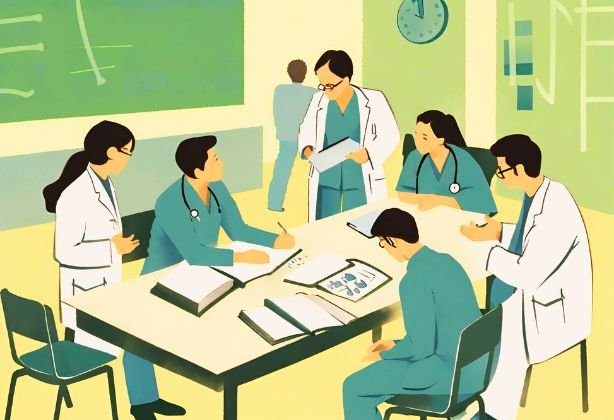
Conclusion
By following these tips, you will not only be empowering students to become competent and reflective medical professionals, but you will also be contributing to a more dynamic, engaging, and effective learning experience. PBL is a journey of continuous discovery, where each problem solves a puzzle and opens the door to new questions and learning. Turn the learning process into an exciting adventure that prepares future doctors for the real-life challenges and rewards of practicing medicine.
By incorporating the strategies outlined above, you will not only be empowering students to become competent and reflective medical professionals, but you will also be enriching the educational environment with a more dynamic, engaging and effective. Problem-Based Learning (PBL) is not limited to a teaching methodology; it is a journey of continuous discovery, an invitation for students to delve deeply into the complexity of medicine and prepare for the challenges they will encounter in their future career.
Each problem situation is an opportunity to solve a puzzle and, at the same time, open the doors to new questions and learning. This process not only stimulates curiosity and passion for medicine, but also fosters a holistic and empathetic approach to medical practice, essential for patient care.
Therefore, transform the learning process into a exciting adventure, which not only prepares future doctors for the technical challenges of medical practice, but also for the immeasurable rewards of making a meaningful difference in people's lives.
By adopting PBL, you are committing to a medical education that values innovation, collaboration and critical reflection — pillars that support excellence in medical practice. Let us together cultivate a new generation of doctors, ready not only to face healthcare challenges, but to turn them into opportunities to advance medicine and improve quality of life globally.
With this understanding, we encourage educators and institutions to explore and improve their pedagogical practices, adopting PBL as a transformative tool in medical training. After all, today's education is the foundation on which the future of medicine will be built.
We want to hear from you!
If you are familiar with the world of Problem-Based Learning, you know that the art of creating engaging problem situations can be as challenging as it is rewarding. Do you have any experiences, tips or challenges you faced on this journey that you would like to share?
Leave your message in the comments below and contribute to a richer and more connected learning community. Each story can illuminate the path of other educators. Let's together build a collaborative space where the important thing is to learn from each other and raise the quality of medical education to new heights.
Common questions
For write good problems in PBL (Problem-Based Learning), it is crucial to create realistic and challenging scenarios that encourage critical thinking and collaboration. Start with situations that reflect real challenges in medical practice, incorporating ethical, social and psychological aspects to enrich the debate and promote deep learning. Ensure that problems are relevant and applicable to the students' professional context.
Additionally, balance the complexity of the problems to challenge students without overwhelming them, adjusting the difficulty according to the maturity level of the class. Include varied data, such as graphs, images and case studies, can make problems more interesting and help students develop skills in interpreting and using different types of information in medical practice.
Last but not least, the problem situation must be a narrative of a situation, involving aspects from several dimensions. It is not a clinical case, therefore it does not have the same writing structure as a case. Bring the characters involved to life.
To put into practice the problem-based learning (PBL), the first step is to structure an educational environment that supports this methodology. This includes preparing authentic and relevant problems that simulate real-life challenges, encouraging students to apply theoretical knowledge in practical scenarios. Furthermore, it is important to establish collaborative work groups, where students can discuss, explore and solve proposed problems together, promoting teamwork and the exchange of knowledge.
Implementing PBL also requires educators to take on a more supportive role. facilitators rather than transmitters of knowledge. They should guide discussions and encourage an investigative approach, helping students develop critical thinking and analytical skills. The teacher should encourage the use of a variety of resources, such as scientific articles, books and audiovisual materials, which can enrich learning and provide different perspectives on the problem at hand.
Finally, a crucial aspect of successful PBL implementation is the continuous feedback. Regular formative assessments and constructive feedback are essential for students to reflect on their learning strategies and better understand their areas for improvement. Through reflective practice, guided feedback, and a collaborative learning environment, PBL can be effectively put into practice, resulting in a rich and engaging educational experience.
In the best-known implementation in the world, the process of Problem-Based Learning (PBL) is structured in seven steps that guide students from identifying the problem to presenting the material used. This methodology is designed to encourage critical thinking, collaboration and self-directed learning, promoting a deep understanding of medical concepts and their practical applications. There are other implementations with small variations in the number of steps or steps.
Initially, students are presented with a problem and begin by clarify unfamiliar terms and concepts. They then define the problem more precisely, followed by a Brainstorm to raise hypotheses and possible relationships between the content of the problem. After that, they systematically structure the problem and formulate learning objectives, leading to autonomous search for information. With new knowledge acquired, students come together to synthesize information and apply it to the problem, culminating in process evaluation and reflecting on what was learned.
Each of these steps contributes to the development of essential skills in medical practice, such as the ability to make accurate diagnoses, develop effective treatment plans, and work well as a team. Careful implementation of PBL steps prepares students to face complex healthcare challenges with confidence and competence.
O Problem-Based Learning (PBL) method it was invented in the 1960s by educators at the Faculty of Medicine at McMaster University in Canada. This pioneering group, led by doctor and educator Howard S. Barrows, sought an alternative to traditional teaching, which often separated theoretical learning from clinical practice. They wanted a method that prepared students for the real challenges of medicine, encouraging problem solving, critical thinking and self-directed learning.
Barrows and his team's innovative approach revolutionized medical education, providing a foundation for students to build their knowledge actively rather than passively absorbing information. The successful implementation of PBL at McMaster has inspired educational institutions around the world to adopt and adapt the method for different disciplines and educational contexts, highlighting its flexibility and effectiveness in promoting meaningful learning.
Today, PBL is recognized as a valuable educational strategy, not just in the medical field but across a wide range of fields, thanks to its ability to develop essential practical, cognitive, and interpersonal skills. The contribution of Howard S. Barrows and McMaster University to education continues to positively influence the training of competent and adaptable professionals in various areas of knowledge.
The implementation and dissemination of Problem-Based Learning (PBL) in Brazil cannot be attributed to a single person or specific moment, given the collaborative and gradual nature with which educational innovations spread. However, several higher education institutions in the country began to explore and adopt the PBL method from the 1990s onwards, influenced by international practices and the growing recognition of its effectiveness in medical training and other areas, with the Faculty of Medicine of Marília – FAMEMA, who first implemented PBL in a medical course in 1996.
Several Brazilian universities have been pioneers in adopting this methodology, seeking to reformulate traditional curricula to offer a more integrated and practice-oriented education. These efforts often had the support of medical education professionals who studied or had experience in foreign institutions that already applied PBL, bringing with them the knowledge and motivation to implement similar changes in Brazil.
Thus, more than the work of a single person, the introduction and expansion of PBL in Brazil reflects the collective effort of academics, educators and institutions committed to innovation in teaching and learning, constantly seeking to improve the training offered to the country's future professionals. .
Features of PBL (Problem-Based Learning) stand out for promoting an active learning environment, where students are the main agents of their own education. The first characteristic is the focusing on real problems, which serve as a starting point for learning, encouraging students to apply theoretical knowledge in practical situations. This approach encourages autonomous research and the critical analysis, as students seek information for the challenges presented.
Another fundamental characteristic of PBL is the team work. Students work in small groups, collaborating to manage problems, which promotes the development of interpersonal and communication skills, essential in the professional environment. Furthermore, PBL encourages developing self-directed learning skills, preparing students for continuous professional growth throughout their careers, by stimulating curiosity and the ability to seek and evaluate information independently.
Finally, the continuous feedback is an intrinsic feature of PBL, offering students regular assessments of their performance and progress. This not only helps identify areas for improvement, but also reinforces concepts learned and promotes reflection on the learning strategies used. These characteristics make PBL a powerful educational methodology, capable of preparing students not only for tests, but for a successful and rewarding professional life.
At the core of an effective PBL problem (Problem-Based Learning) is the need to reflect real and challenging scenarios that engage students in the active search for information. Therefore, a good problem must be contextualized within practical situations relevant to the students' future professional practice, ensuring that it is aligned with the course's learning objectives. The authenticity of the problem encourages students to apply theoretical knowledge to practice, stimulating meaningful learning.
Furthermore, it is essential that the problem promotes Skills development critical skills, such as analytical thinking, problem solving, effective communication and teamwork. This is achieved through problems that are complex enough to require students to collaborate, debate and explore diverse sources of information, but also clearly defined so that learning objectives are understandable and attainable. The problem should trigger a deep investigation, leading students to question, analyze data and integrate new knowledge.
Lastly, an effective PBL problem must include elements that encourage reflection and the self-learning. This can be facilitated by including ethical aspects, moral dilemmas, or social issues that challenge students to consider multiple perspectives and evaluate the implications of their decisions. By incorporating these components, PBL problems not only prepare students for the technical challenges of their future career, but also enable them to become reflective and socially aware professionals.
In Problem-Based Learning (PBL), terms "problem" and "problem situation" are often used interchangeably, but both play a central role in structuring this pedagogical approach. The "problem" refers to any issue or challenge that requires a solution and that is used as a starting point for the learning process. The "problem situation" is an expression that emphasizes the contextualization and complexity of the problem within a realistic scenario, promoting a deeper immersion of students in the situation presented.
The choice between using "problem" or "problem situation" may depend on the emphasis the educator wishes to place on practical application and the relevance of the context. Problem situations are especially valued in PBL for their ability to simulate real challenges of professional practice, encouraging students to develop critical thinking, problem-solving, and teamwork skills as they seek integrated, evidence-based solutions.
Regardless of the nomenclature, the essential thing is that the challenge presented to students is significant, relevant and capable of actively engaging them in the learning process. This implies the selection or elaboration of problems that not only test theoretical knowledge, but also stimulate investigation, critical analysis and practical application of learning, effectively preparing students for the demands of their future professional careers.
For elaborate a problem situation effective in Problem-Based Learning (PBL), the first step is to ensure that the proposed scenario is realistic and relevant to the study area. This means choosing or creating problems that mimic challenges encountered in professional practice, encouraging students to apply theoretical knowledge in practical contexts. It is essential that the situation stimulates critical questions and promotes the active search for solutions, engaging students in the learning process.
A crucial aspect in elaborating problem situations is the inclusion of multidisciplinary elements. That is, the problem must cover different areas of knowledge, encouraging students to think beyond their immediate specialties and collaborate with colleagues from other disciplines. Additionally, it is important that the problem is open-ended enough to allow for multiple solutions, fostering creativity and critical thinking, but also clear and specific enough to guide students toward the desired learning objectives.
Finally, once the problem situation has been elaborated, the continuous feedback becomes essential. This allows students to reflect on their thinking and learning process, adjusting their strategies as necessary. The elaboration of a successful problem situation in PBL does not end with its initial presentation; it continues to evolve through ongoing dialogue between students and facilitators, ensuring a dynamic and enriching learning experience.
Your message is important to us
Important
This is an open invitation to educators, students and healthcare professionals to engage in this educational transformation. Your participation, whether sharing experiences, ideas or challenges, is crucial to shaping the future of medical education. We are at an inflection point: together, we can lead the change toward medical education that truly meets society's needs. Are you ready to be part of this evolution?
